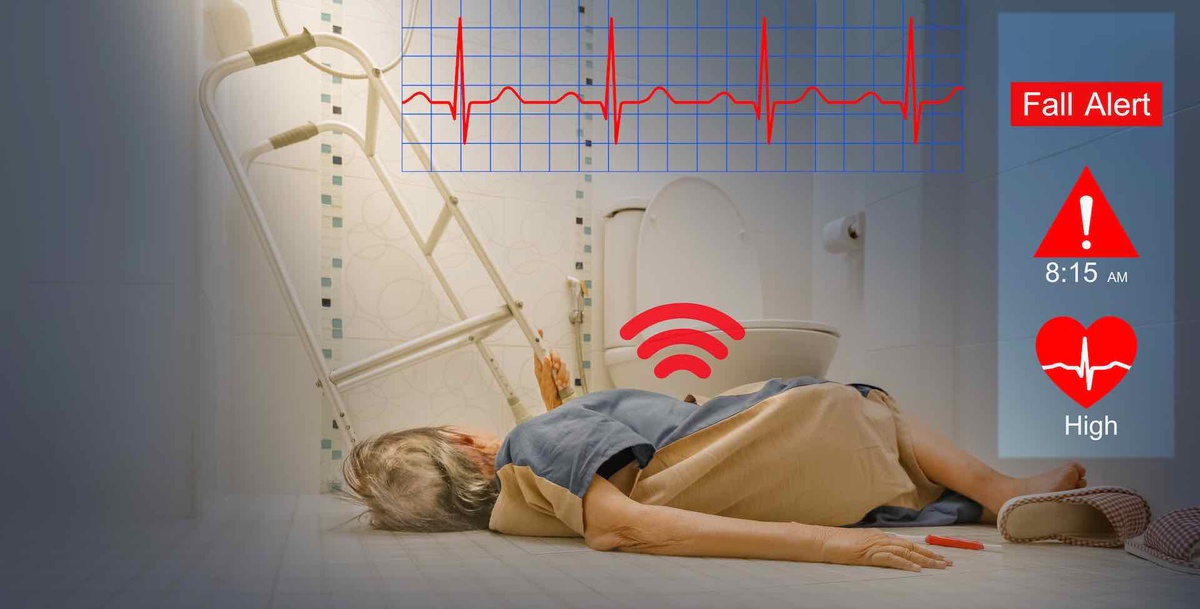Technology may save our Senior living and assisted living facilities from failing. As dramatic as that sounds, there is a real problem with the viability of facilities in this sector. The baby boomer bubble means that demand will rise for the next two decades or so, then it will fall and fall dramatically. Not a good outlook for long term investment.
This increasing demand is coupled with a shortage of skilled workers and escalating costs associated with liability payouts, which are related to that shortage. Fortunately, advances in technology could provide a pathway to tackle these issues effectively.
Staff Shortages and Growing Liability Costs
Staffing issues have plagued the senior living industry, particularly since the COVID lockdowns. In fact, a 2023 LeadingAge workforce poll found that 70% of assisted living providers are experiencing a significant or severe workforce shortage Meanwhile, According to the Bureau of Labor Statistics, healthcare occupations are expected to grow by 16% from 2020 to 2030, much faster than the average for all occupations. Despite this demand, there remains a significant shortfall in the supply of qualified healthcare workers.
Increasing numbers of residents and complex health conditions contribute to a rise in incidents that could lead to legal action. A study by the American Health Care Association and National Center for Assisted Living found that the average cost of a malpractice claim against a senior living facility was $67,000 in 2019. The study also found that the average cost of defending a malpractice claim was $32,000.
In addition to the direct costs of malpractice claims, senior living facilities also face indirect costs, such as the cost of increased insurance premiums, the cost of training staff to reduce the risk of claims, and the cost of defending against frivolous claims.
The high cost of malpractice claims can have a significant impact on the financial viability of senior living facilities. In some cases, malpractice claims can lead to facilities closing their doors.
Although exact figures vary, the costs associated with liability claims are said to be the highest for assisted living and senior care facilities.
To help overcome these insurmountable problems, some facility managers are turning to technological solutions.
Automation in Medication Management
Automating systems for medication management is helping to streamline administrative operations and save costs. It also takes human error out of distributing medication, reducing the chance of residents suffering harm from overdoses and the medical malpractice claims that result. These systems also free up human resources, allowing staff to focus more on care provision.
An example is Sunrise Senior Living in Virginia, who implemented a medication management system called Medline MDS, which uses barcodes to track medications from the pharmacy to the resident. Despite its simplicity, the system helped to reduce medication errors by 98%. It also freed up staff time, as they no longer needed to manually track medications, allowing them to spend more time with residents.
Prior to implementing this system, Sunrise had a medication error rate of approximately 2%, higher than the national average of 1.5% and leaving them open to medical malpractice claims. This would only have deteriorated as the staff shortage worsened. Since implementing the system however, the medication error rate dropped to 0.04%. Truly a significant reduction and an effective system of liability mitigation.
Sensor and Wearable Technology
Falls are the leading cause of medical malpractice claims in the senior living industry, so it’s an obvious area to improve. Smart monitoring systems that use sensors and wearables have been developed to detect falls, monitor vital signs, and track physical activity. This technology can significantly reduce the risks associated with resident care, and by extension, limit liability issues.
One facility that made use of wearable technology was the Brookdale Senior Living facility in Brentwood, Tennessee. They implemented a fall detection system called Life Alert. The system uses wearable devices to monitor residents for falls and automatically alerts staff in the advent of a fall. It has been found to help to reduce falls by 50%. It has also helped to reduce the severity of injuries suffered from falls.
Before implementing the Life Alert system, Brookdale had experienced a fall rate of approximately 10 falls per 1,000 resident days. This dropped to 5 falls per 1,000 resident days, once the system was installed, a 50% reduction.
In addition to a reduction in the number of falls, the Life Alert system has also helped to reduce the severity of injuries from those falls. Before the system was implemented, the around 20% of falls resulted in a serious injury. This has dropped to 10% since the system was implemented, a significant reduction and has helped improve resident outcomes.
Long Term Financial Benefits
Although exact savings can be hard to quantify, experts generally agree that technological interventions have long-term financial benefits. For instance, Mercer Marsh Benefits indicated that telehealth alone could yield annual savings of up to $10 billion across the healthcare industry.
But adopting new technology comes with its own set of challenges, including initial costs and staff training. One of the challenges has been to get facility managers to view the cost of technology as an investment that will reap dividends, rather than just an expense. The rate of implementation has also been helped by various grants and alternative funding options which have become available to assist facilities in overcoming these barriers.
Conclusion
Technology is no longer an optional addition for assisted living and senior care facilities; it's fast becoming a necessity. These advancements offer promising solutions to some of the most pressing problems these institutions face, such as staffing shortages and rising liability costs. While implementation challenges exist, the long-term benefits make a compelling case for the adoption of technological solutions in the world of senior care. Medical malpractice insurance broker, Westwood, has developed some very good content around technology for senior living liability mitigation. The company is also a leader in sourcing the best liability insurance for assisted living facilities and other senior living facilities. They also develop alternative structures like different forms of captives where traditional insurance proves inadequate for Senior Living Facilities. I am personally very impressed with Westwood’s approach to helping the senior living industry overcome these challenges.


No comments yet